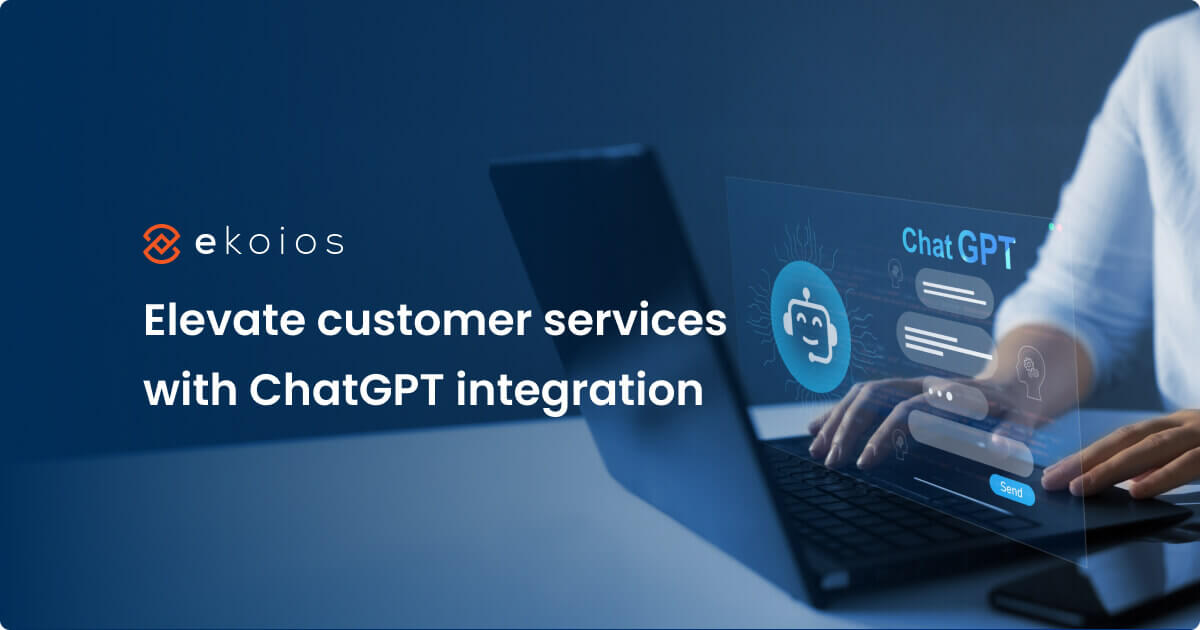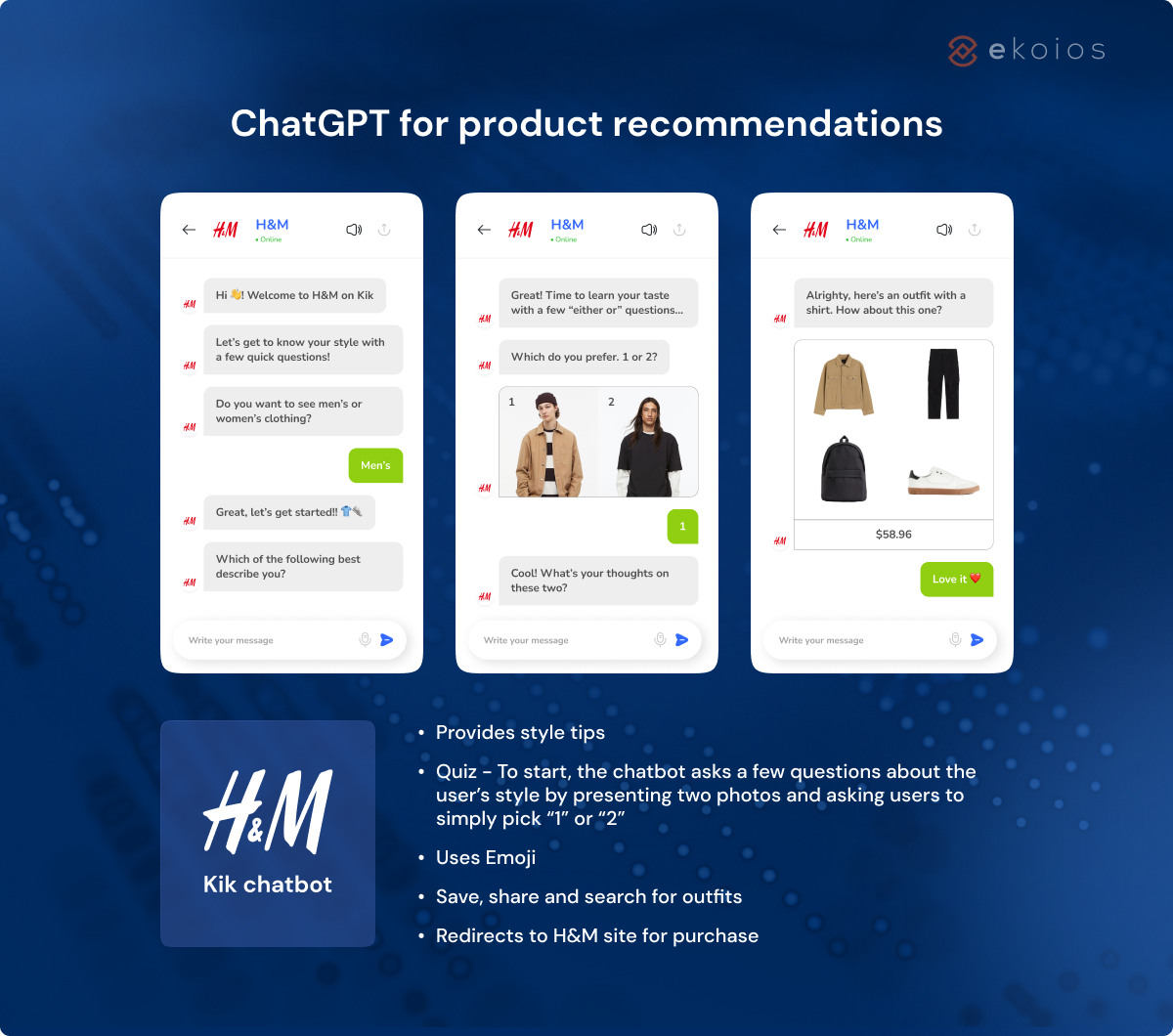
- 1
- 2
- 3
- 4
ChatGPT, an OpenAI-developed language model, has gained popularity as one of the significant advancements in customer service, utilizing artificial intelligence technologies. ChatGPT employs deep learning techniques to generate human-like responses and engage in meaningful conversations with customers. There are numerous ways that ChatGPT can bring value to the customer service team. In this article, we’re going to introduce you to various use cases of ChatGPT in customer support and highlight its benefits in improving customer experience.
8 use cases for ChatGPT in customer service
 1. 24/7 customer support
1. 24/7 customer support
Providing 24/7 support with live chat agents is resource-intensive and may lead to delayed response times during peak hours or outside business hours. Besides, handling customer complaints requires empathy and understanding, and employees sometimes experience emotional fatigue or difficulties in managing escalated situations consistently. According to Hubspot, 90% of consumers say that an instant response is important or very important when they have a customer service question. With the help of ChatGPT, businesses can provide round-the-clock customer support, ensuring that customers can receive assistance at any time. It engages in real-time conversations with customers, addressing their queries, and guiding them through the resolution process, which helps customers’ concerns be acknowledged, documented, and addressed promptly.
📌Explore how Ekotek integrated ChatGPT into NFTify system for 24/7 customer service
2. Handling frequently asked questions (FAQs)
Human agents often spend a significant amount of time responding to repetitive and straightforward inquiries, which decreases work productivity and increases wait times for more complex issues. 66% of customers reported having to repeat or explain information multiple times to different representatives, wasting time. ChatGPT can efficiently handle common customer inquiries, reducing the need for human intervention and saving valuable time for both customers and support agents. Customers type in a few keywords, ChatGPT analyzes their queries to retrieve relevant information from the organization’s predefined FAQs and provides accurate and helpful responses.
3. Order tracking and updates
Manually tracking each customer’s order and providing updates can be time-consuming and prone to errors, leading to customer frustration and additional support requests. When companies integrate ChatGPT into their systems, it interacts with customers, retrieves order information from the backend systems, and provides timely updates on order status. Customers can obtain real-time updates on their orders, saving them the hassle of contacting support or navigating through complex tracking systems. The online retail giant, Amazon, implemented an AI Chatbot to enable customers to monitor their order status and receive real-time delivery notifications. Customers can query the Amazon Chatbot regarding their order status, estimated delivery time, and any disruptions that may occur during delivery.
4. Appointment scheduling
Managing multiple appointments, coordinating schedules, and avoiding conflicts can be challenging for human agents, causing scheduling errors and customer dissatisfaction. Therefore, many industries are using ChatGPT to help with appointment booking like travel and hospitality, healthcare and F&B. ChatGPT understands customer preferences, checks availability, and assists them in scheduling appointments by coordinating with the organization’s scheduling system. It simplifies the appointment scheduling process, allowing customers to book services or arrange meetings conveniently.
5. Product recommendations
 ChatGPT for product recommendationsCustomer service representatives may not have access to customers’ complete purchase history or the ability to analyze data in real-time, making it difficult to provide personalized recommendations consistently. ChatGPT can offer tailored product recommendations based on customer preferences, enhancing the overall shopping experience and increasing customer satisfaction. It suggests relevant products, provides comparisons, and assists customers in making informed decisions. By analyzing purchase history, it identifies cross-selling and upselling opportunities, enabling businesses to boost revenue and customer lifetime value. A giant fast-fashion brand, H&M is using AI Chatbot to offer personalized styling assistance, making online shopping more interactive. As a result, H&M’s chatbot achieved an 86% brand engagement rate and 8% click-through rate, which was higher than H&M’s email marketing click-through rate of 2%.
ChatGPT for product recommendationsCustomer service representatives may not have access to customers’ complete purchase history or the ability to analyze data in real-time, making it difficult to provide personalized recommendations consistently. ChatGPT can offer tailored product recommendations based on customer preferences, enhancing the overall shopping experience and increasing customer satisfaction. It suggests relevant products, provides comparisons, and assists customers in making informed decisions. By analyzing purchase history, it identifies cross-selling and upselling opportunities, enabling businesses to boost revenue and customer lifetime value. A giant fast-fashion brand, H&M is using AI Chatbot to offer personalized styling assistance, making online shopping more interactive. As a result, H&M’s chatbot achieved an 86% brand engagement rate and 8% click-through rate, which was higher than H&M’s email marketing click-through rate of 2%.
6. Language support
For companies with global presences, employing a multilingual support team can be costly and challenging to find talents proficient in all required languages, potentially limiting the organization’s ability to provide comprehensive language support. ChatGPT’s multilingual capabilities cater to more than 100 languages, enabling businesses to provide customer support in different languages, thereby expanding their global reach. In detail, ChatGPT processes customer queries in various languages, translates responses, and provides accurate support in the customer’s preferred language.
📌Learn more about how Ekotek developed a multi-language summarizing tool based on ChatGPT3.5
7. Feedback and survey
ChatGPT can be deployed to collect feedback or conduct surveys. Its conversational capabilities enable it to engage in natural and interactive conversations with users, making the feedback collection process user-friendly. Customers can provide feedback or respond to survey questions conversationally, enhancing the user experience and increasing the likelihood of obtaining valuable insights. A customer who had a positive experience might be asked different follow-up questions than a customer who had a negative experience. Based on the survey responses, ChatGPT personalized subsequent interactions with customers. It can reference their previous feedback, address specific concerns, or provide tailored solutions. This personalized approach enhances the customer experience and demonstrates that their feedback is valued, fostering customer loyalty and satisfaction.
8. Onboarding and tutorials
Conducting individual onboarding sessions for each new customer can be time-consuming for staff, which might delay the customer’s ability to fully utilize the product or service. Regarding policies and terms, human agents may struggle to explain them in a concise and easily understandable manner for new customers. ChatGPT guides customers through the onboarding process, offering step-by-step instructions and tutorials to help them navigate products or services seamlessly. It also retrieves information from policy documents, explains policies in a user-friendly manner, and provides accurate policy clarifications for smooth onboarding. Many banking and financial institutions simplify the customer onboarding process by a few steps on the mobile phone. Customers can initiate the banking application with the instruction of a ChatGPT-powered chatbot in their own time and at their own pace without having to visit a bank branch.
Addressing concerns and challenges
While ChatGPT has proven to be a valuable tool in various industries, it is important to address some of the concerns and challenges associated with its implementation.
- Lack of contextual understanding: ChatGPT’s responses are generated based on patterns it has learned from vast amounts of text data. It may have difficulty understanding the context of a conversation or accurately interpreting complex queries. This limitation arises because ChatGPT lacks real-world experiences and cannot reason or access external knowledge beyond what is presented in its training data. The model produces ambiguous responses when faced with vague inputs. Companies can implement pre-chat surveys or user prompts to gather additional information upfront, allowing ChatGPT to provide more contextually relevant responses. Ongoing training and fine-tuning of the model using real user interactions can enhance its contextual understanding over time.
- Generating incorrect or biased responses: The data ChatGPT is trained on may contain inaccuracies or biased viewpoints. Consequently, the model inadvertently reproduces these biases in its responses. Bias can also arise from imbalances in the training data, where certain perspectives or demographics are underrepresented, leading to skewed outputs.
A robust review and feedback mechanism should be taken regularly, where admins review and correct any problematic responses generated by ChatGPT. This iterative feedback loop helps to continuously refine and improve the model’s accuracy and mitigate biases. - User-friendly experience: ChatGPT occasionally generates responses that are wordy or difficult for users to understand due to the model’s tendency to prioritize coherent and grammatically correct responses over clarity and simplicity. When encountering ambiguous queries, it also fails to ask clarifying questions, giving rise to poor user experiences. Furthermore, ChatGPT is a virtual assistant that lacks the emotional capacity to handle cases needing empathy, necessitating the involvement of human agents in serious client issues.
To enhance the user experience, companies should produce a user feedback mechanism to gather feedback on the clarity and usefulness of ChatGPT’s responses. This will be used to improve the model’s output and optimize its conversational abilities.
Training ChatGPT on your custom business knowledge base
The custom business knowledge base allows you to harness the full potential of the model while aligning it with your company’s specific domain, brand voice, and competitive goals. The customization streamlines the model’s performance, accuracy, and relevance, enabling it to meet the needs of your organization and users effectively.
- Domain-specific understanding: Every business operates within a specific domain, be it finance, healthcare or e-commerce. Training ChatGPT on your custom business knowledge base allows the model to gain a deeper understanding of the terminology, and nuances of your industry. You can equip the model with detailed knowledge about your offerings, making it provide accurate and comprehensive information to users, answer product-related questions, and assist with customer support tasks effectively.
- Industry-specific use cases: Different businesses have unique workflows and challenges. With a custom business knowledge base, you can integrate your specific use cases into the model’s training process. This helps ChatGPT develop a better understanding of your organization’s workflows to provide tailored recommendations and insights that align with your business goals.
- Brand consistency: Each organization has its specific brand voice, tone, and style of communication. Tailoring ChatGPT with your data allows you to match the model’s responses with your brand’s guidelines. The generated responses are consistent with your brand image, values, and messaging, offering a cohesive and personalized user experience.
📌Read more: A step-by-step guide to integrate ChatGPT into your system
Conclusion
Incorporating ChatGPT into customer service operations can revolutionize the way businesses interact with their customers, streamline processes, and ultimately lead to improved customer satisfaction and higher revenue generation. On that note, this tool has certain concerns that need more training on custom business data to ensure domain-specific understanding and brand consistency.
As AI technology continues to advance, ChatGPT remains a powerful tool for businesses looking to deliver exceptional customer service. Are you planning to employ AI Chatbots in your customer support system? Don’t hesitate to contact Ekotek experts for a thorough consultation.
- 1
- 2
- 3
- 4